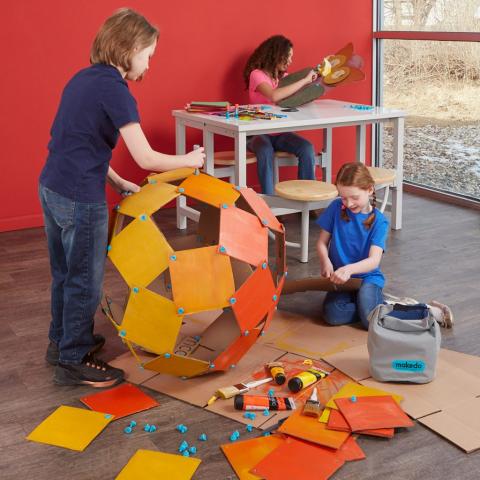
I Have $1000 to Start a Makerspace: What Should I Buy?
By Diana Rendina
 It’s getting close to the end of the school year and your principal finds $1,000 that she has to spend ASAP. Or maybe you find out that you got that $1,000 community grant and need to spend the funds by a deadline. It could be that a generous local business gave you $1,000 to improve your school. There are all sorts of scenarios where you could end up with money that you have to spend quickly for your school. Oftentimes, you have to get your purchase orders in by a certain time or you lose the money. Situations like these can be a great opportunity to start a makerspace.
It’s getting close to the end of the school year and your principal finds $1,000 that she has to spend ASAP. Or maybe you find out that you got that $1,000 community grant and need to spend the funds by a deadline. It could be that a generous local business gave you $1,000 to improve your school. There are all sorts of scenarios where you could end up with money that you have to spend quickly for your school. Oftentimes, you have to get your purchase orders in by a certain time or you lose the money. Situations like these can be a great opportunity to start a makerspace.
One of the questions I hear most often is “What should I buy first to start a makerspace?” There is no right answer to this question. Every school is different, every student population is different, and every makerspace will be different. The first things I would run out and buy for my school might be the last things your school would need. As with all purchases for your school, you want to make sure that you are intentional and have a plan for your makerspace. What experiences do you want students to have? What activities do you want to encourage? Is the makerspace supporting existing curriculum or filling a gap? Thinking through all of these things can help you get a better idea of what your makerspace needs are.
While there is no one-size-fits-all shopping list to start a makerspace, here are a few items I can recommend that can help you find a way to spend that money and start your space.
Author
This article originally appeared on the Demco Ideas & Inspiration Blog.








 Sphero
Sphero Dash
Dash Ozobot
Ozobot Color Craze Bookmarks
Color Craze Bookmarks StickTogether Mosaic Poster
StickTogether Mosaic Poster Duct Tape
Duct Tape Seville Bin Rack
Seville Bin Rack